“The lack of clarity is endangering bicyclists.”
– Doug Parrow, former bicycle lobbyist
Despite our best efforts to stay in front of all the cycling and transportation-related bills at the legislature this session, one managed to sneak away.
Senate Bill 895 seeks to strengthen and clarify Oregon Revised Statute 811.420, the law that governs passing obstructions in no passing zones. Specifically, the bill would require drivers to slow down when passing an obstruction on their right and would amend the definition of obstruction to include someone riding a bicycle or any other person in a vehicle that’s traveling at a much slower speed.
The bill’s chief sponsor is Eugene-area Democrat Floyd Prozanski (D-4). (Those of you who’ve followed bike advocacy in Oregon for a while might recall that this is the same lawmaker who passed Oregon’s current bicycle safe passing law back in 2007.) According to the Oregon Legislative Information Service (OLIS), Sen. Prozanski introduced the bill on behalf of two constituents: Richard Hughes and Doug Parrow. Parrow is not just any Oregonian, he is the former chair of The Street Trust’s legislative committee (back when they had one and were known as the Bicycle Transportation Alliance) and he was a board member of the nonprofit for 13 years. Parrow resigned from The Street Trust in 2010.
The problem Parrow and other backers of this bill are trying to solve is that many drivers — as many police officers — are not aware that crossing over the centerline to pass a bicycle rider is actually already legal. Oregon’s bicycle safe passing law (ORS 811.065) states that, “The driver of a motor vehicle may drive to the left of the center of a roadway to pass a person operating a bicycle proceeding in the same direction.”
But Parrow and others worry that people don’t understand the law and that current ODOT and Department of Motor Vehicle training materials lack clarity. They feel this leads to dangerous passes and/or anger toward bicycle riders.
“The lack of clarity is endangering bicyclists,” Parrow shared with members of the Judiciary Committee (which Prozanski chairs) at a public hearing for the bill on March 8th. “Some motorists have cited the ‘prohibition’ on crossing the centerline as the reason that they have passed bicyclists too closely. Other motorists have followed too closely and otherwise harassed bicyclists instead of safely passing.”
The problem is particularly acute on low-traffic, rural roads where no passing zones can stretch for miles. This means automobile drivers are presented with a quandary: follow behind the bicycle rider(s) for a long time, commit what they think is an illegal move, or make a dangerous pass. SB 895 would make the no passing zone law more explicit when it comes to bicycle riders and Parrow says it should prompt ODOT and the DMV to update its driver education materials accordingly.
Another provision in SB 895 would require people to drive at least five miles under the speed limit while making the pass.
“The bill will just put common sense back into to the law,” said bike advocate Richard Hughes at the public hearing.
SB 895 passed out of the Judiciary Committee on March 20th by a vote of 4-0 (with one excused) and is now on the Senate floor.
Check out the bill overview on OLIS.



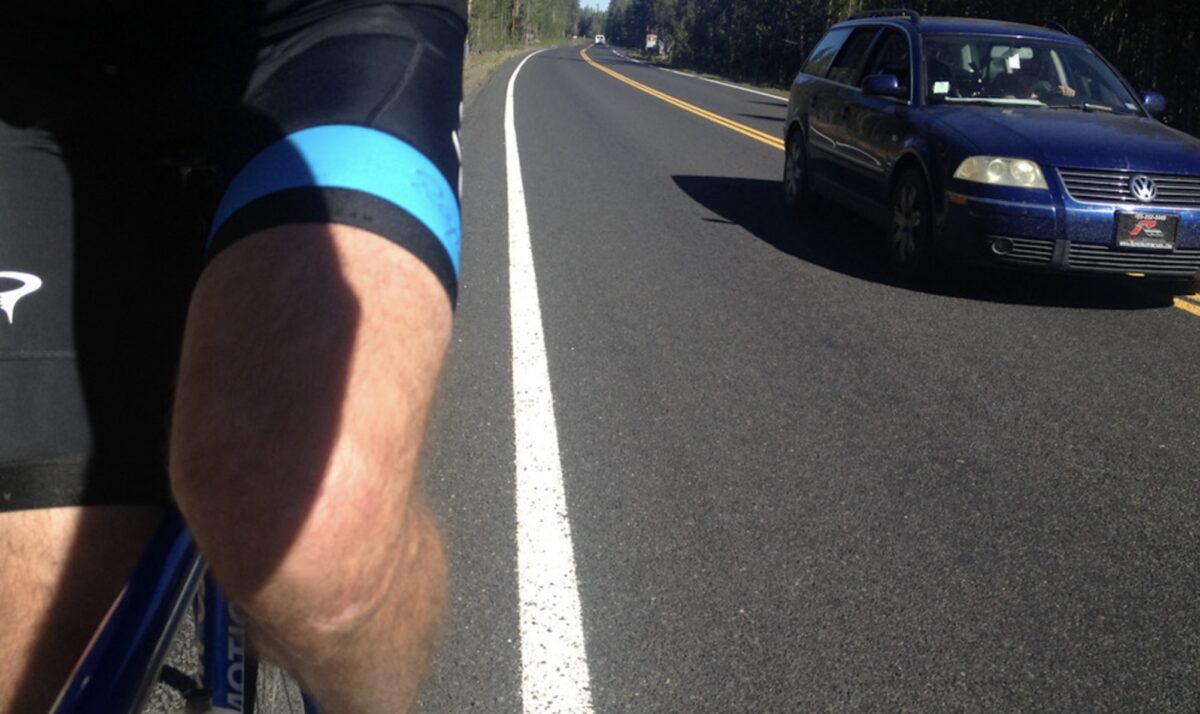
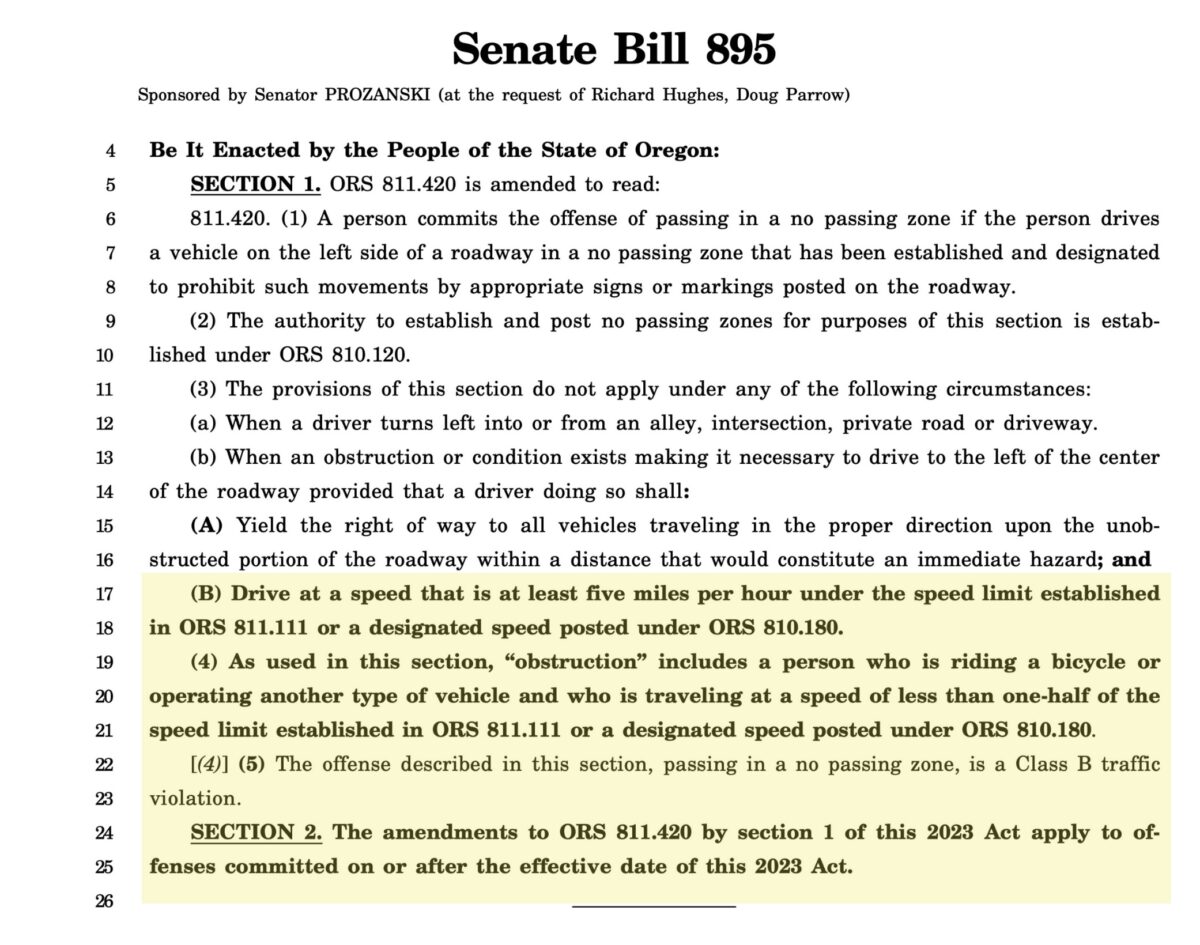

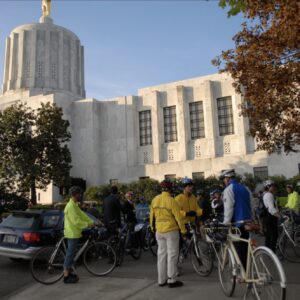
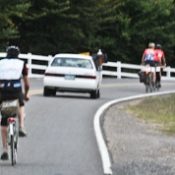
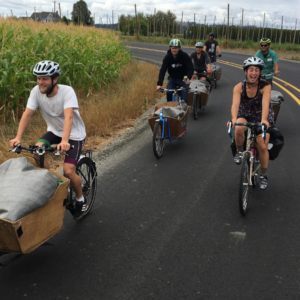
Thanks for reading.
BikePortland has served this community with independent community journalism since 2005. We rely on subscriptions from readers like you to survive. Your financial support is vital in keeping this valuable resource alive and well.
Please subscribe today to strengthen and expand our work.
I’m not sure how I feel about being classified as an “obstruction”.
In Portland we don’t need more traffic laws. We just need to enforce the ones we have. Passing more laws without enforcement is meaningless.
It’s not meaningless. From the article:
“But Parrow and others worry that people don’t understand the law and that current ODOT and Department of Motor Vehicle training materials lack clarity. They feel this leads to dangerous passes and/or anger toward bicycle riders.”
and
“Some motorists have cited the ‘prohibition’ on crossing the centerline as the reason that they have passed bicyclists too closely. Other motorists have followed too closely and otherwise harassed bicyclists instead of safely passing.”
In other words, the law is being revised so people understand it better, and so new drivers are being trained properly. Some people currently pass unsafely because they ignore laws, others pass unsafely because they are misunderstanding the law. The second group’s behavior can improve without enforcement.
I can’t see how this will make any difference — especially on rural roads (I rode practically nothing else until moving to Portland).
Except at low speeds or when lanes are especially wide, it’s not possible to safely pass without crossing the line. Those unbroken lines may go for miles, but I’ve never had trouble getting people to pass me. I would especially take issue with the idea that the problem is worse on low traffic rural roads which is the best riding to be had in this state. A very mediocre rural riding day is far better than the best riding day in a city.
BTW, if people like to be passed unsafely, the picture for this article is a textbook way to set up the encounter even though the motorist was courteous in this case. If you ride far right inside a narrow lane or even worse, a fog line, many drivers won’t alter their course — they’ll treat the lane like a slot that they belong in figuring you belong in the slot you’re in. This is suboptimal at best and super dangerous if they’re hauling or towing protruding loads (especially since less experienced drivers only think about the vehicle part).
But if you’re in the flow like any other slow moving thing (e.g. farm machinery), they overwhelmingly pull out for the pass — because there’s no other option. As a double bonus, they typically ease up. Of course, some may not be paying attention in the moment, so it’s always a good idea to keep an eye on what’s coming up behind you. But as soon as you see them edge out or adjust their speed, you know it will be fine.
The good readers of BP give drivers way too much credit. The average driver is not nearly as attentive to the finer points of the law as is the norm here. A significant percentage don’t even know the important points, and many that do don’t care.
I was a little surprised at the ambiguity in the current law given my experiences on rural roads. I love cycling in the rural areas, but man those unnecessary close passes at high speeds are horrible. Super rare, but when it happens I give the finger. I have no idea why a driver chooses to do a close pass except for one specific situation, and I want to second the importance of taking more of the lane as default.
When you are in a situation where it would be hard for a driver going above 40 mph to see oncoming traffic, take more of the lane and force drivers to cross well into the opposite lane if they choose to pass. This may get you a honk, but think about it – if they do a dangerous pass at full speed and an oncoming car actually does come they are going to swerve into you. You are dead. They have a slightly damaged and bloody car. If they are more fully in the opposite lane, then everyone dies in the event of opposite traffic coming. I find almost all of the time the driver will wait for a safe opportunity to pass. This situation IMO is why cyclists are allowed to take the full lane. I’ll move more to the right when I see that passing conditions are safe to make it easier to pass.
To drivers who get stuck behind me when I am going up a blind hill on a slightly busy road with no shoulder – I get it, being stuck behind me going less than 10 mph in a 45+ mph road must suck. I don’t want to be in your way. I have no choice, I was having a great ride but this section can’t be avoided. Please advocate for cycling infrastructure for these connection sections and we will both be way happier. In the meantime, please don’t point a gun at my head. That is what a close pass feels like.
From the linked article:
How is getting hit by a bus at sub 35 mph acceptable? I always assumed that provision was included as a compromise for anti-bike politicians it’s even worse that it’s for professional drivers of public transit. If the point is that it’s dangerous to pass so closely that a cyclist can’t make a mistake without getting hit then 35 mph is way too fast as a cutoff. Is anyone ok with getting hit/run over by a car going just 5 mph? I know peoples reaction times are going to be better at a slower speed but I can’t imagine they’re all that great even at 15 mph.
Not that these changes address this at all. The DMV could just update their manual to make it clear that drivers are permitted to cross the center line to pass a cyclist. Drivers aren’t reading or following the Oregon Revised Statutes. If they were almost no one would pass me when I bike around town. Most violate at least one law when doing so. The most common being driving on the left at an intersection.
That TriMet carve is not acceptable, but getting bills passed is often more about what compromise you are willing to make than what is the best policy decision. The bill would not pass without TriMet support.
Oh I get it but what’s the point in passing a toothless bill? I wonder if it’s ever been enforced. My guess is at best it’s been cited in an insurance claim or lawsuit to collect money for someone’s severe injuries or death. It seems most of our traffic laws surrounding bicycles are just used to decide who’s at fault not to actually keep anyone safe through enforcement.
Well except for those stop sign stings PPB loved to do at least the legislature fixed that.
The intersection pass is a favorite. Also, passing around a left turn signal, and exceeding the speed limit to pass on a downhill. If I ride down the hill from N. Mississippi/ Fremont before 9 AM, it’s 50-50 a motor vehicle will make pass, committing to their move at a point where the curve and the bridge pillars obstruct the view and I’m already 5 mph over the posted limit. The last goof was in a Subaru with a “No farms no food” bumper sticker.
You probably just didn’t see the “no cars no food” bumper sticker on the other side.
What I find …curious, is that even if it were/is illegal to cross the centerline to pass, that it would prevent people crossing the line to pass.